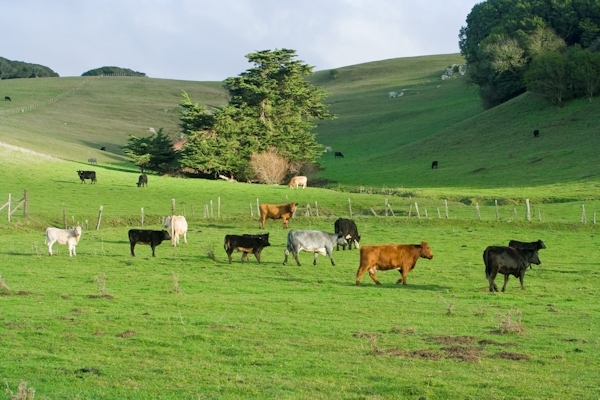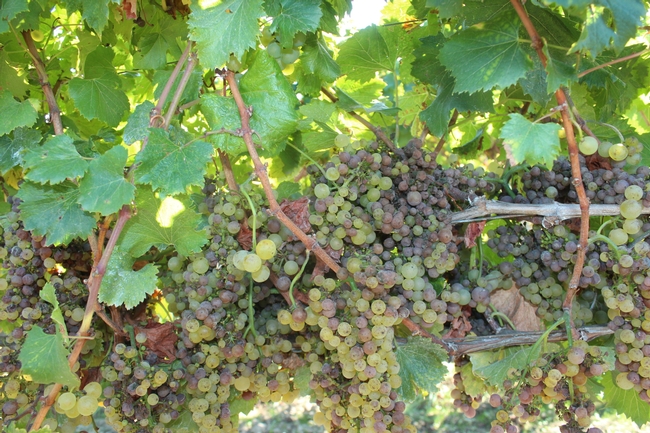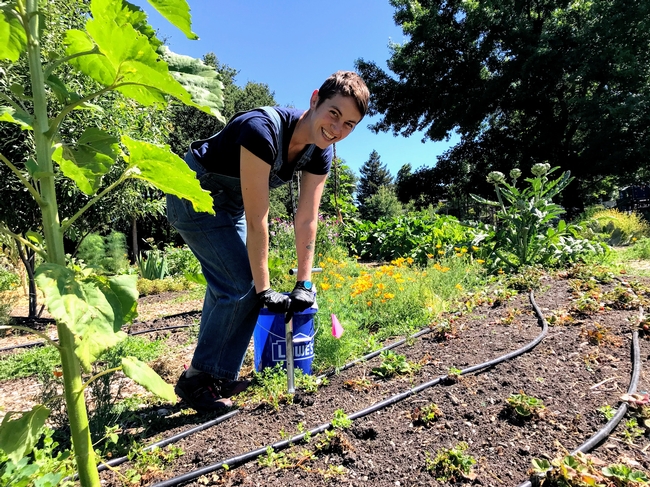- (Focus Area) Agriculture
- Author: Rhonda J Smith
- Contributor: Akif Eskalen
For the first time many growers are facing the dilemma of what to do with fruit that will not be sold. Although wine inventories have been slowly building over the past few years, 2019 is the first year in which a number of growers are feeling the effects of excess supply due to the large 2018 crop.
Given that yields thus far for most growers have been “average” or better and there is significant unsold inventory of bulk wines, custom crushing uncontracted grapes in 2019 may not be a viable option. Hopefully there will be buyers as the harvest continues but in this market, the prices offered are likely to be less than the cost of production.
Allowing unsold fruit to remain on the vines may seem unthinkable yet with no income from those blocks, it makes sense. This means not dropping clusters by hand and not running a harvester in the vineyard to get the berries off.
From the perspective of a plant pathologist:
clusters that decompose over the winter - either on the vine or on the ground -
are not likely to have a noticeable effect on fungal disease pressure the following year given common vineyard floor management practices.
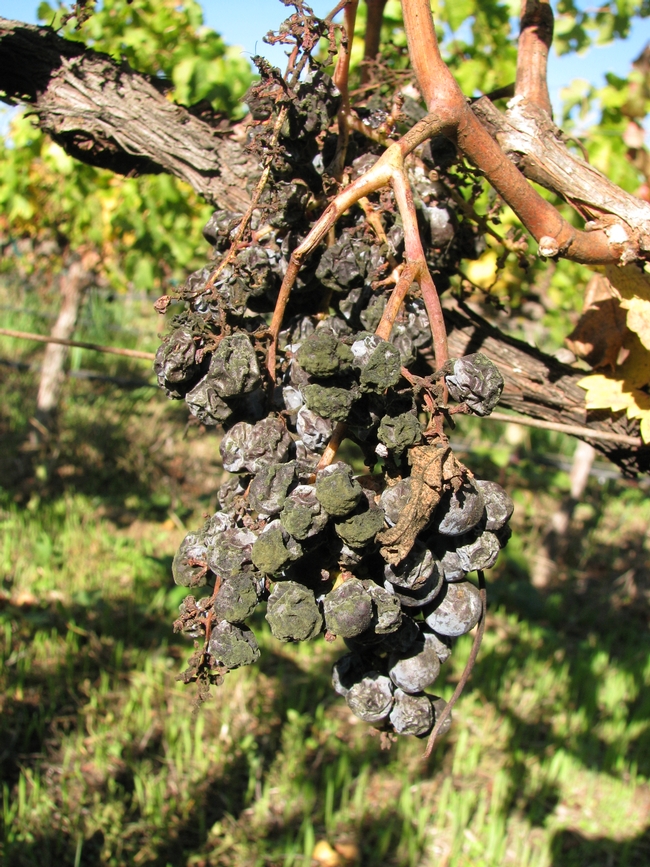
All common grapevine fungal pathogens exist inside vineyards. For example, fallen petioles, rachises that remain on the vine after mechanical harvest, pruning debris and woody tendrils that cling to trellis wires all support the growth of fungi. These fungi act as sources of inoculum that can infect wounds caused by pruning and suckering, and infect berries at bloom and other green tissue.
The fungi that colonize decaying berries include the same fungi seen growing on damaged berries before harvest including Botrytis cinerea and Cladosporium and Aspergillus species which are associated with Botrytis bunch rot, Cladosporium rot and sour rot respectively. Fungi can infect then colonize the ripening berries when spores enter through the slightest opening in the berry cuticle caused by sunburn or the presence of diffuse, unseen powdery mildew. Berries are an overwintering structures for these fungi and others.
Botrytis cinerea spores are ubiquitous given the fungus can survive on dead tissue as well as infect living tissue. It grows on dead calyptras (flower caps) and stamens after bloom and will infect a young berry through the wounds left when the cap is shed. In various studies, Botrytis sporulation in the lab occurred on petioles and rachises collected on the ground and remnants of rachises collected from canes after pruning.
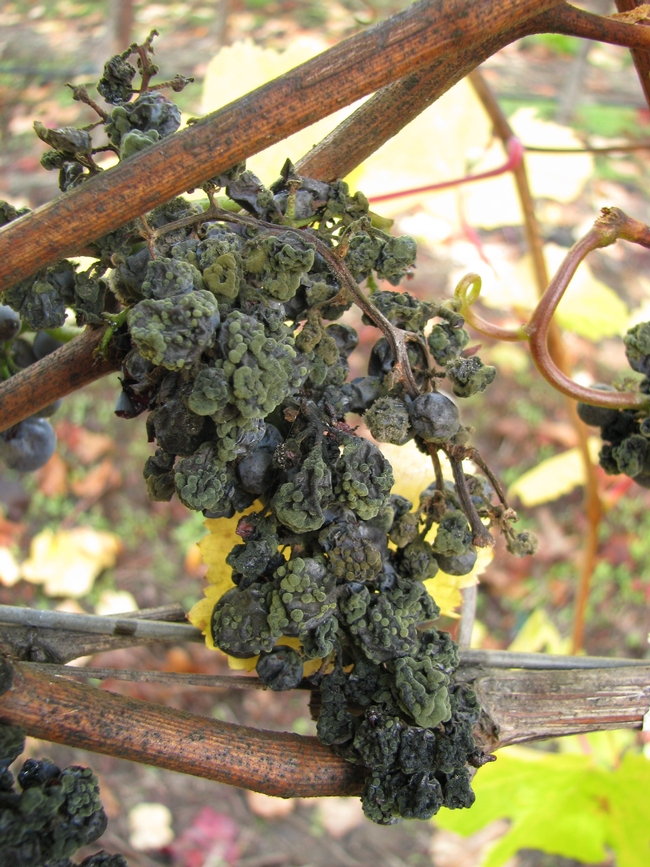
- Eliminating pruning debris will remove the inoculum formed on decomposing clusters and pieces of canes prior to bud break. Vineyard access to alternate rows is required to incorporate last year's wood and cluster remnants while maintaining resident vegetation or a sown cover crop in the non-tilled rows.
All common grapevine fungal pathogens exist inside vineyards and the relative importance of allowing unsold fruit to remain on the vines should be put into perspective of other vine tissues that are also decomposing. Clusters that remain in the vineyard are not likely to have a noticeable effect on disease the following year if common vineyard floor management practices are followed.
Acknowledgement: Valuable input provided by Dr. Akif Eskalen, Cooperative Extension Plant Pathologist, UC Davis.
- Author: Julia Van Soelen Kim
Two years ago today, Sonoma County residents awoke to fire spreading through urban and wild lands across our county, a dark cloud of smoke covering the sky, and ash blanketing the ground. There continues to be much work for our community to collectively recover from the fires--most of it is hard and heavy work, whether it be emotional work, community work, economic work, environmental work. UCCE Sonoma's Produce Safety after Urban Wildfire: Citizen Science Initiative is just one small piece of that body of work.
The project sought to find out if garden and farm-grown produce exposed to ash was safe to eat, mobilized community in the days and weeks after the fire to collect leafy greens from sites across the county for later analysis, formed a unique partnership between UCCE Sonoma, Petaluma Bounty, and a passionate public health researcher, Vanessa Raditz, and ultimately led to a workshop series, a newly published scientific report, a forthcoming toolkit for other communities affected by wildfire to assess the safety of their own unique context, and a collaboration with researchers from UC Davis School of Veterinary Medicine to investigate the safety of backyard chicken eggs in fire affected counties.
Today we honor the terrible toll of the fire on this community, and we welcome your participation in our upcoming Post-Fire Food Safety Workshop as a small piece of recovery and learning for the future. The workshop will be held on Thursday, Oct. 17, 2019 from 6:00pm-8:00pm at the Environmental Center of Sonoma County, 55 Ridgway Ave., Santa Rosa, CA 95401. Refreshments will be provided. RSVP at ucanr.edu/postfirefoodsafety10.17.19
- Author: Karen Giovannini
UCCE is looking for growers interested in collaborating on a study of vineyard irrigation water use to help provide more accurate usage rates to the Groundwater Sustainable Agencies (GSAs) whose current modeled volumes overestimate actual use based on site variability and deficit irrigation practices.
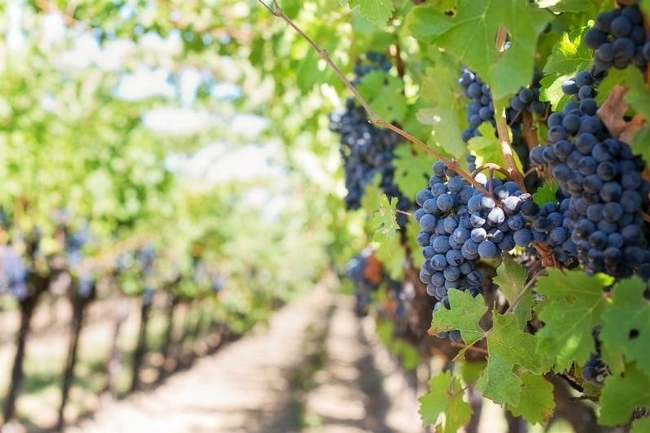
- Author: Alda Pires
- Editor: Karen Giovannini

As part of the UCCE's commitment to helping build a more resilient community, the UCCE is partnering with the UC Davis School of Veterinary Medicine to hold a series of workshops throughout Northern California to provide backyard producers with information on animal health and biosecurity, antimicrobial use, and ways to comply with new federal and state antimicrobial regulations. This work is being funded by the California Department of Food and Agriculture (CDFA).
We are conducting a survey that is part of the Healthy Animals, Healthy People workshop series on animal health and antimicrobial use for backyard producers. This questionnaire asks about the specific practices and perceptions that you apply to your animals' health, husbandry, and antimicrobial use. This survey also seeks to identify whether your knowledge about these topics changed after attending the regional workshops.
The survey will take approximately 15-20 minutes of your time and the provided information will be kept strictly confidential. We will not connect your name with your responses. This study is being conducted for research and outreach purposes. You can choose not to participate or can quit the survey at any time.
This research has been reviewed by an Institutional Review Board (“IRB”). You may talk to an IRB staff member at (916) 703-9151 or IRBAdmin@ucdmc.ucdavis.edu if you have questions about your rights as a research subject. If you have any other questions, please contact the questionnaire administrator, Jasmin Bardales, at jabardales@ucdavis.edu, or the principal investigator, Dr. Alda Pires.
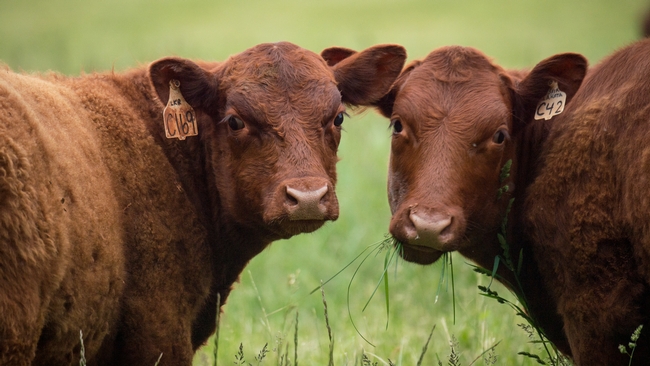
- Author: Stephanie Larson
- Author: John Gorman
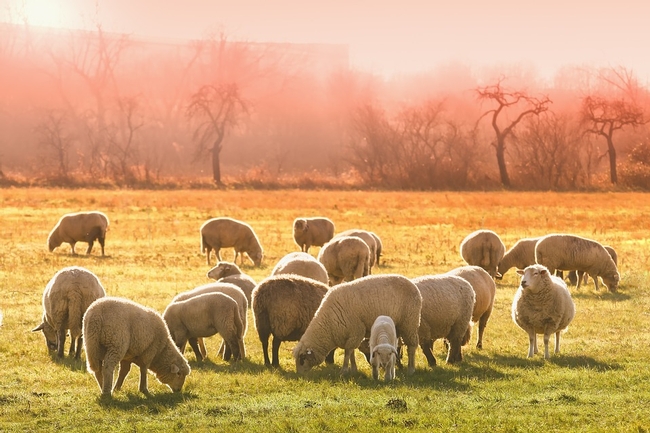
Along with prescribed fire, grazing of domestic livestock may be the earliest vegetation management tool employed by humans. We suggest that the challenges of vegetation management on working landscapes may be addressed with the careful sharpening of this old tool. Prescription grazing is the application of livestock grazing at a specified season, duration and intensity to accomplish specific vegetation management goals. Controlled grazing of this type is being employed throughout California on public and private land and is proving to be a promising tool in reducing the fire fuels and unwanted, excessive vegetation.
Furthermore, livestock grazing has one distinct advantage over other control methods; in the process of controlling an undesirable plant, grazing animals convert it into a saleable product.
Steps in Developing a Grazing Prescription
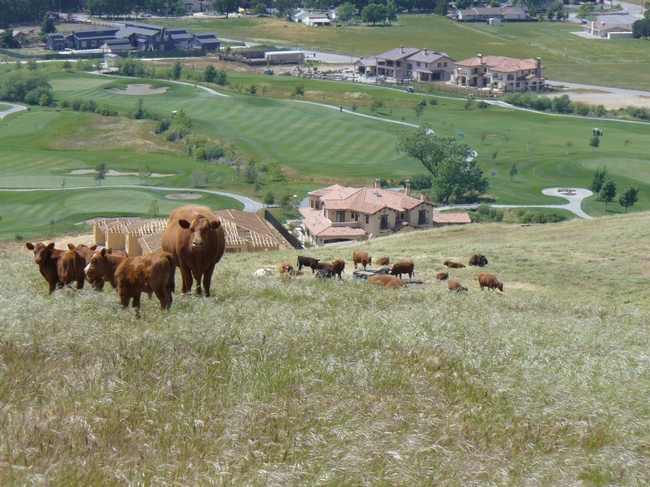
Selecting the Right Species
The species of livestock best suited for the specific vegetation management goals depends on both the plant species of concern and the production setting. Cattle have large rumens that are well adapted to ferment fibrous material and are classified as grass and roughage eaters. They are therefore generally superior to goats or sheep to manage fibrous herbaceous vegetation such as dormant grasses. Goats have narrow and strong mouths well designed for stripping individual leaves from woody stems and for chewing branches. Goats also have a large liver mass relative to cattle or sheep and may therefore more efficiently process plants that contain secondary compounds such as tannins or terpenes. Sheep are generally considered an excellent species to accomplish control of herbaceous weeds. Sheep possess a narrow muzzle and a relatively large rumen per unit body mass. These characteristics allow them to selectively graze and yet tolerate substantial fiber content, and results in diets generally dominated by forbs. Sheep are also small, sure-footed, and well suited for travel in rough topography which may not be easily accessible for chemical weed control.
Grazing Workshops for Working Landscapes in Sonoma & Marin Counties
Creating resiliency in the rural landscape of Sonoma and Marin Counties is critical in preparing for the next natural disaster, managing biodiversity or achieving ecosystem service goals such as carbon sequestration, wildlife habitat and viewsheds. This growing recognition of the ecological benefits livestock grazing is important to our County's resiliency. However, grazing can be difficult to landowners that have never grazed their properties before. UC Cooperative Extension will hold several workshops on prescriptive grazing techniques to address the sustainability of our working landscapes while reducing the vegetation that leads to catastrophic wild fires. Private land owners manage the majority of the open spaces in Sonoma and Marin Counties and these workshops are aimed at those private citizens and other public land owners that are interested in using grazing as a vegetation management tool. Increasing the number of agriculture land grazed will benefit both public and private open space and the residents that benefit from them. The goal of the workshops is to increase understanding, interest and acceptance of using grazing as a vegetation management tool. Upcoming workshop held at SRJC Shone Farm: 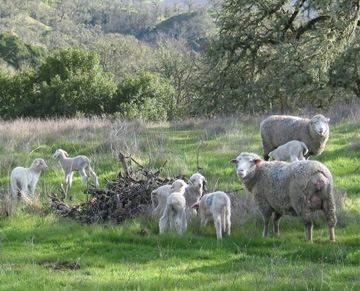
DAY 1 – FRIDAY, May 17 (8:30 am - 7pm)
- Setting Achievable Grazing Goals
- Basic Principles of Managed Grazing
- Animal Nutrition, Body Condition Scoring
- Selecting the right grazer
- Animal Husbandry Basics
- Grazing 101
- Electric Fencing
- Drought & Flood Management
DAY 2 – SATURDAY, May 18 (8: 00 am - 5 pm)
- Graze Planning
- Infrastructure
- Pasture & Range Ecology
- Livestock Protection Tools
- Health Issues-Parasite Control
- Livestock Economics, Leasing
- Carbon Plan
- Monitoring, meeting grazing goals
Register online for
Grazing School for Vegetation Management & Wildfire Vegetation Reduction.
Sonoma and Marin County's working landscapes, properly managed with prescription grazing, could prove to be a winning solution for all parties involved. Grazing not only provides a service to land owners and managers that may not be easily achieved in other ways, but it can also provide an income stream to aspiring livestock grazers just starting their grazing businesses. These workshops will provide educational opportunities for all parties to learn the “how to” in grazing, landowners who what to graze themselves, landowners who want to hire grazes and grazers who are looking to start or increase their grazing business enterprise. Let's work together to sharpen the “old” tool of “livestock grazing” into the “new vegetation management tool” for working landscapes.
